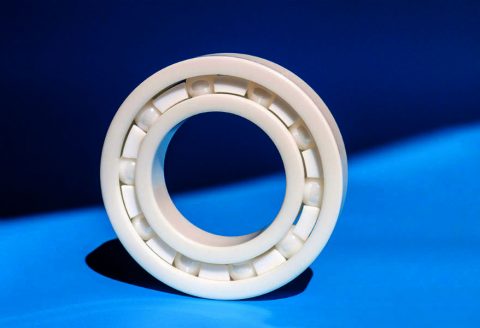Alumina ceramics are widely used due to their excellent properties such as high temperature resistance, strong hardness and light weight. The dielectric constant of alumina ceramics refers to a value of the degree of dielectric polarization of insulating materials under an AC electric field. The ratio of the capacitance of capacitors with the same electrode size when vacuum is used as the medium. It represents an inherent property of the material. The national standard stipulates that when the test frequency is 1MHz, the dielectric constant of the alumina ceramic structure is between 9-10.
Alumina Ceramic Density
The density of alumina is very small in special ceramics, only about half of that of zirconia, its density is 3.5g/cm3, and its weight is light.
Alumina ceramics are divided into two types: high-purity type and ordinary type.
High-purity alumina ceramics are ceramic materials with Al2O3 content of more than 99.9%. Because their sintering temperature is as high as 1650-1990 ° C and the transmission wavelength is 1-6 μm, they are generally made of molten glass to replace platinum crucibles; use its light transmission. It can be used as a sodium lamp tube because of its properties and corrosion resistance of alkali metals; it can be used as an integrated circuit substrate and a high-frequency insulating material in the electronics industry.
Ordinary alumina ceramics are divided into 99 porcelain, 95 porcelain, 90 porcelain, 85 porcelain and other varieties according to the content of Al2O3. Sometimes those with Al2O3 content of 80% or 75% are also classified as ordinary alumina ceramics series.
Among them, 99 alumina ceramic materials are used to make high-temperature crucibles, refractory furnace tubes and special wear-resistant materials, such as ceramic bearings, ceramic seals and water valve plates; 95 alumina ceramics are mainly used for corrosion-resistant and wear-resistant parts; 85 ceramics Because part of talc is often mixed into it, the electrical properties and mechanical strength are improved, and it can be sealed with metals such as molybdenum, niobium, and tantalum, and some are used as electric vacuum devices.
Alumina Ceramic Properties
1. High hardness
As determined by the Shanghai Institute of Silicate, Chinese Academy of Sciences, its Rockwell hardness is HRA80-90, second only to diamond in hardness, far exceeding the wear resistance of wear-resistant steel and stainless steel.
2. Good wear resistance
As determined by the Institute of Powder Metallurgy of Central South University, its wear resistance is 266 times that of manganese steel and 171.5 times that of high-chromium cast iron. According to our customer follow-up survey for more than ten years, under the same working conditions, the service life of the equipment can be extended by at least ten times.
3. Light weight
Its density is 3.5g/cm3, which is only half of steel, which can greatly reduce the equipment load.


